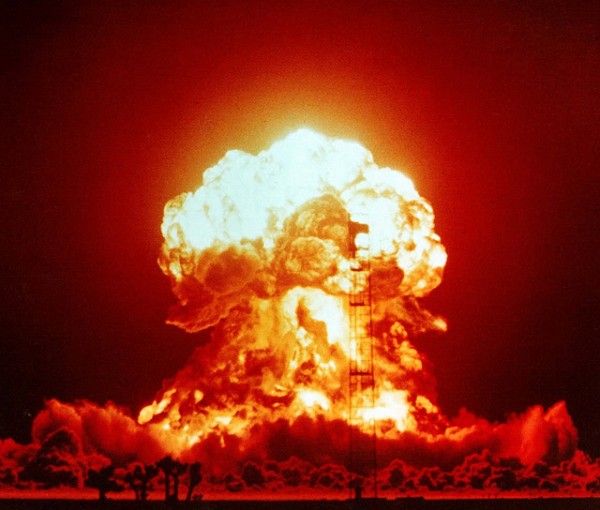By Jacques Strauss, | May 16, 2017

Atmospheric nuclear test performed by the U.S. on April 18, 1953 as part of Operation Upshot-Knothole at the Nevada Test Site.
As the world technology continues to develop, the threat of a nuclear war has been more real than was before. Countries like the United States, Russia, China, North Korea, Pakistan, and India, are some of the main players that could ignite a civilian targeted nuclear strike.
Global conflicts are being reported now and then, which are sometimes considered normal by most individuals. However, recent international news somehow highlighted the possible use of nuclear technology as means of a weapon of mass destruction, sending chills to the spine of both experts and common individuals.
Like Us on Facebook
A nuclear strike on civilians is gradually being sketched out as a possible outcome of the intense conflict between two states. From an experts' point of view, a nuclear strike on civilian target could realistically occur when "tensions between two nuclear states rise to the point where a single miscommunication or technical failure could trigger a launch," or simply when a terrorist group could get hold of the said weapon.
Fewer chances of nuclear war may happen if the second factor will be considered first. However, giving more emphasis on nuclear states in conflict, the world may already be on the edge of a nuclear war.
The current tension between North Korea and South Korea-US somehow affirms to the standard set by experts. Moreover, the historically rooted tension between US and Russia likewise coincides with the first factor for a nuclear strike to happen as established by experts.
Although most countries and media outlets are focused on US-North Korea tension, India and Pakistan are also the likely candidates to start a nuclear war. Both countries have developed nuclear weapons outside the jurisdiction of the Non-Proliferation Treaty, and both countries could use such weapons against a conventional form of invasion, if necessary.
"If they think that a conventional invasion is coming - whether it is or not - they may be worried that the nuclear forces that they rely on for their survival might be threatened ... there may be what's sometimes called a 'use it or lose it' situation," FiveThirtyEight quoted Vipin Narang, author of "Nuclear Strategies in the Modern Era as saying.
Lastly, the US-China's brewing concern for territory in the South China Sea could also ignite a nuclear conflict. Since the United State acts like a big brother to his Asian allies, tension could escalate that could potentially lead to a nuclear strike.
However, the ones highlighted above remains a projection, but could still be a reality with just one wrong move of their respective leader, like Donal Trump of the USA. Realizing that, if such event would really happen, a World War 3 preceded by a nuclear strike will surely be catastrophic.
Under the given circumstances, it is good to note that the first impact will not be the worst part. The following events after the nuclear war would be much worse than the war itself.
Watch here below the aftermath of a nuclear strike:
-
Use of Coronavirus Pandemic Drones Raises Privacy Concerns: Drones Spread Fear, Local Officials Say

-
Coronavirus Hampers The Delivery Of Lockheed Martin F-35 Stealth Fighters For 2020

-
Instagram Speeds Up Plans to Add Account Memorialization Feature Due to COVID-19 Deaths

-
NASA: Perseverance Plans to Bring 'Mars Rock' to Earth in 2031

-
600 Dead And 3,000 In The Hospital as Iranians Believed Drinking High-Concentrations of Alcohol Can Cure The Coronavirus

-
600 Dead And 3,000 In The Hospital as Iranians Believed Drinking High-Concentrations of Alcohol Can Cure The Coronavirus

-
COVID-19: Doctors, Nurses Use Virtual Reality to Learn New Skills in Treating Coronavirus Patients











